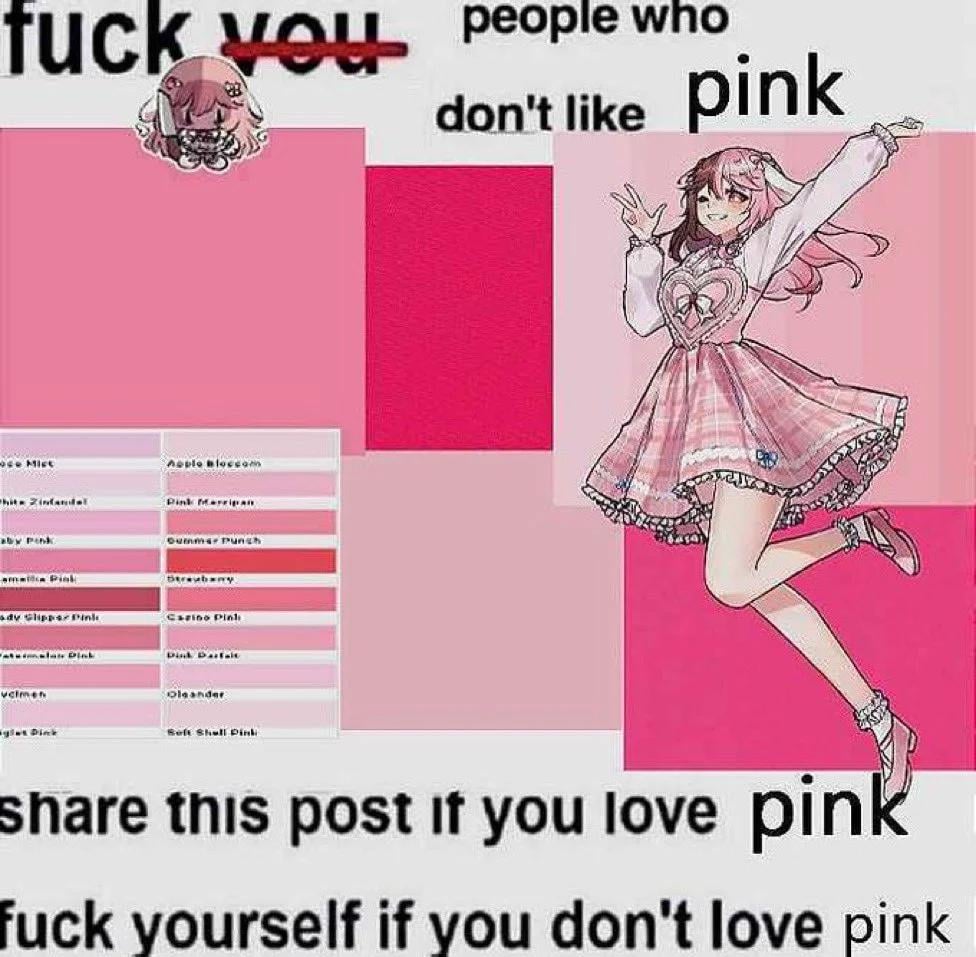I like pink but can I still fuck myself
196
Be sure to follow the rule before you head out.
Rule: You must post before you leave.
Other rules
Behavior rules:
- No bigotry (transphobia, racism, etc…)
- No genocide denial
- No support for authoritarian behaviour (incl. Tankies)
- No namecalling
- Accounts from lemmygrad.ml, threads.net, or hexbear.net are held to higher standards
- Other things seen as cleary bad
Posting rules:
- No AI generated content (DALL-E etc…)
- No advertisements
- No gore / violence
- Mutual aid posts are not allowed
NSFW: NSFW content is permitted but it must be tagged and have content warnings. Anything that doesn't adhere to this will be removed. Content warnings should be added like: [penis], [explicit description of sex]. Non-sexualized breasts of any gender are not considered inappropriate and therefore do not need to be blurred/tagged.
Also, when sharing art (comics etc.) please credit the creators.
If you have any questions, feel free to contact us on our matrix channel or email.
Other 196's:
pink is alright, but purple is clearly the best
Orang best colour to ever exist!!!!!!!!!!!11111111111111111111111
🟠 show results
Pink
pink
Some people don't have the concept of pink as a distinct color. They'd just think of it as being a shade of red or something like that, the way you might have "light blue" rather than a separate color.
https://en.wikipedia.org/wiki/Blue%E2%80%93green_distinction_in_language
Blue–green distinction in language
In many languages, the colors described in English as "blue" and "green" are colexified, i.e. expressed using a single cover term. To describe this English lexical gap, linguists use the blend word grue, from green and blue,[1] a term coined by the philosopher Nelson Goodman—with a rather different meaning—in his 1955 Fact, Fiction, and Forecast to illustrate his "new riddle of induction".
The exact definition of "blue" and "green" may be complicated by the speakers not primarily distinguishing the hue, but using terms that describe other color components such as saturation and luminosity, or other properties of the object being described. For example, "blue" and "green" might be distinguished, but a single term might be used for both if the color is dark. Furthermore, green might be associated with yellow, and blue with either black or gray.
According to Brent Berlin and Paul Kay's 1969 study Basic Color Terms: Their Universality and Evolution, distinct terms for brown, purple, pink, orange, and gray will not emerge in a language until the language has made a distinction between green and blue. In their account of the development of color terms the first terms to emerge are those for white/black (or light/dark), red and green/yellow.
To better understand this, consider that English makes a similar distinction between "red" and light red (pink, which is considered a different color and not merely a kind of red), but such a distinction is unknown in several other languages; for example, both "red" ( 紅, hóng, traditionally called 赤), and "pink" (粉紅, fěn hóng, lit. "powder red") have traditionally been considered varieties of a single color in Chinese.
That is so sad.
(alexa play despacito. Do we still do that?)
